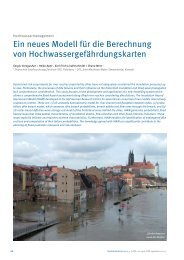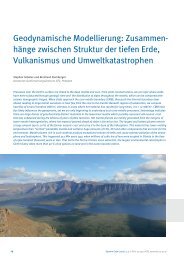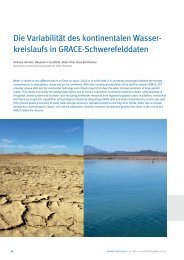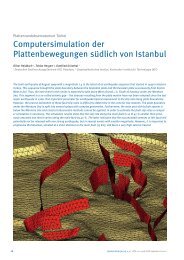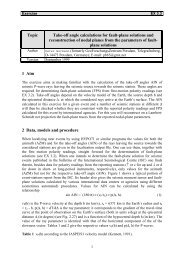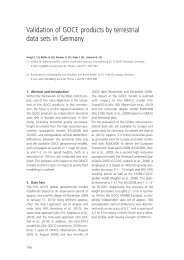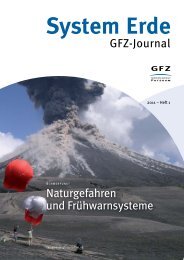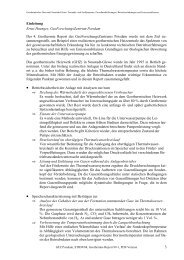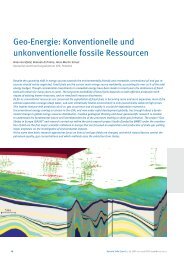2 Seismic Wave Propagation and Earth models
2 Seismic Wave Propagation and Earth models
2 Seismic Wave Propagation and Earth models
You also want an ePaper? Increase the reach of your titles
YUMPU automatically turns print PDFs into web optimized ePapers that Google loves.
2. <strong>Seismic</strong> <strong>Wave</strong> <strong>Propagation</strong> <strong>and</strong> <strong>Earth</strong> <strong>models</strong><br />
Different kinds of seismic waves follow different time paths, e.g., the reflected waves pP (see<br />
Fig. 2.43) a true minimum path, the PP or the SKKS reflection (Fig. 2.42) a minimax path <strong>and</strong><br />
the reflected wave P'P' (PKPPKP) (Fig. 2.44) a true maximum path. Note that the character of<br />
the stationary path influences the character (phase shift) of the reflected waveform. Whenever<br />
a seismic ray travels in some parts of its raypath as a maximum time ray, it touches a caustic.<br />
This caustic can be a focusing point (see 2.5.3.3 or 2.5.3.4) or a surface along which seismic<br />
rays superimpose each other (see 2.5.4.3). In any case prominent phase distortion can be<br />
observed <strong>and</strong> has to be taken into account during the analysis of seismograms.<br />
2.5.2.1 Snell’s Law for a flat <strong>Earth</strong><br />
From Fermat’s Principle follows, with some simple geometry <strong>and</strong> mathematics, Snell’s Law<br />
of wave refraction (e.g., Aki <strong>and</strong> Richards 1980 <strong>and</strong> 2002; Lay <strong>and</strong> Wallace, 1995; Shearer,<br />
1999; Červeny, 2001; Kennett, 2001):<br />
sin i/v = s sin i = sx = 1/vapp ≡ p = constant (2.12)<br />
where i is the angle of incidence, measured between the ray <strong>and</strong> the vertical (see Fig. 2.24), v<br />
is the velocity of wave propagation in the medium, s =1/v is called slowness, <strong>and</strong> p is the socalled<br />
ray parameter, v/sin i = vapp is the apparent horizontal wave propagation velocity in xdirection<br />
with vapp = ∞ for i = 0 (vertical incidence of the ray) <strong>and</strong> sx = 1/vapp is the horizontal<br />
component of the slowness vector s. Note, however, that p is constant for laterally<br />
homogeneous media only. In Fig. 2.24 the refraction of a seismic wavefront <strong>and</strong> of a related<br />
seismic ray across the interface of two half spaces with different but constant seismic<br />
velocities v1 <strong>and</strong> v2 is sketched. Such an instantaneous velocity jump is called first-order<br />
discontinuity. Because the ray parameter must remain constant across the interface, the ray<br />
angle has to change:<br />
sin i1/v1 = sin i2/v2 = s1 sin i1 = s2 sin i2. (2.13)<br />
Fig. 2.24 A plane wavefront with the associated ray crossing a medium boundary with v2>v1.<br />
The ray in medium two is refracted away from the vertical, i.e., i2>i1.<br />
2.5.2.2 Snell's Law for the spherical <strong>Earth</strong><br />
Above, a flat-layered case was considered. Yet the <strong>Earth</strong> is a sphere <strong>and</strong> curvature has to be<br />
taken into account at distances greater than about 12°. In this case the ray parameter has to be<br />
26



